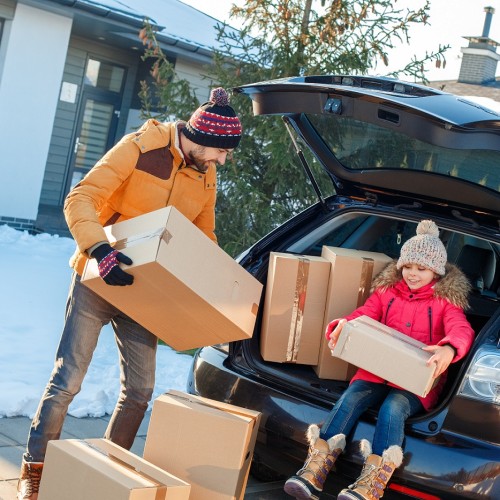Moving in the winter—with the associated risks of snow, freezing rain, sub-zero temperatures and bitterly cold winds—takes careful planning. We’ll help you determine what precautions you need to take so that everything runs smoothly!
Moving in winter: The good news
Would you have preferred moving in July or end of April? It’s understandable. But good news! Did you know that there’s a flip side to moving in wintertime? It’ll cost you much less!
Why? Because winter is the low season for moving companies—except during such times as the Holidays. Moving companies have little demand in the winter, which means you can take advantage of very good rates. Make sure, however, you do your homework: not all movers have the experience, expertise and required material to move in winter.
Moving in winter: What you need to consider
Here is a list of some of the major aspects you need to consider when you plan for your winter move.
- Safety first! Whether it’s for the movers you’ve hired or your friends, make sure that driveways and entrances are free from ice and snow. Make sure you scatter enough salt or sand the morning of your move.
- Carefully monitor the weather. A few days before moving day, check out the forecast and keep shovels and de-icing salt on hand if precipitation is on the horizon. Don’t pack them with the rest of your furniture and personal items in case you need them in a hurry. And why not invest in some studded winter boots? You can avoid some nasty falls!
- Spread temporary protective floor coverings where movers are likely to walk.
- Lower the thermostat temperature in your new home to 15°C. This will help to avoid temperature shocks as you move items in and out. You’ll also prevent unnecessary heating and saving on energy costs.
- Dress warmly—but not too warmly. Wear several layers that you can remove if you are too hot while moving furniture or carrying boxes. Above all, wear warm gloves that offer a good grip.
Care for belongings (and the people helping you!)
On moving day, make sure your plants are properly wrapped up and transport them with care. Freezing temperature can kill a plant. Ideally, bring them with you in a heated car.
Electronics, such as TVs or home theatre and sound systems, although not living organisms like plants, are just as fragile when it comes to drastic changes in temperature. Carefully wrap them up in blankets to protect them from the cold.
Finally, take care of the people who are helping you move by serving much-appreciated warm beverages and water throughout the day. It’ll help your crew to stay motivated until the job is done!
Keys takeaways
- Take advantage of great rates with moving companies in the winter.
- You must take extra care when moving in the wintertime.
- Plants and electronics are more susceptible to cold weather.

